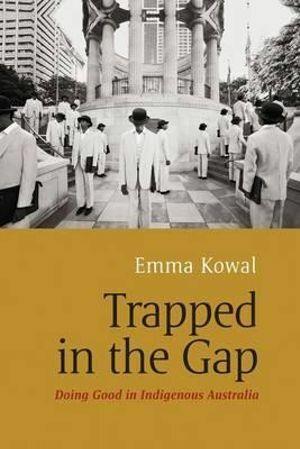
Trapped in the Gap by Emma Kowal

In Australia, a ˜tribe of white, middle-class, progressive professionals is actively working to improve the lives of Indigenous people. This book explores what happens when well-meaning people, supported by the state, attempt to help without harming.
˜White anti-racists find themselves trapped by endless ambiguities, contradictions, and double binds ” a microcosm of the broader dilemmas of postcolonial societies. These dilemmas are fueled by tension between the twin desires of equality and difference: to make Indigenous people statistically the same as non-Indigenous people (to 'close the gap') while simultaneously maintaining their ˜cultural distinctiveness.
This tension lies at the heart of failed development efforts in Indigenous communities, ethnic minority populations and the global South. This book explains why doing good is so hard, and how it could be done differently.
"Trapped in the Gap represents one of these rare studies, and comes at a particularly pertinent time; as the adage goes, ˜the winds of change are blowing and we must be as cognisant as we ever have been of what impact, if any, we are having on the lives of Indigenous people in Australia." Anthropological Forum
"A very interesting and useful book." The Asia Pacific Journal of Anthropology
"Well written, widely documented and counter-intuitive, Trapped in the Gap is a brilliant book and a significant contribution to the study of aboriginal health, racial relations in post-settler states and cultural recognition in a liberal and multicultural society. It is undoubtedly a must-read book for anyone who seeks to better understand the problems of Indigenous health and racial relations in contemporary Australia." Social Anthropology
"...the points it raises are central to the dilemma that white Australia tries and fails to negotiate again and again in its encounters with remote Aboriginal Australia." The Monthly

